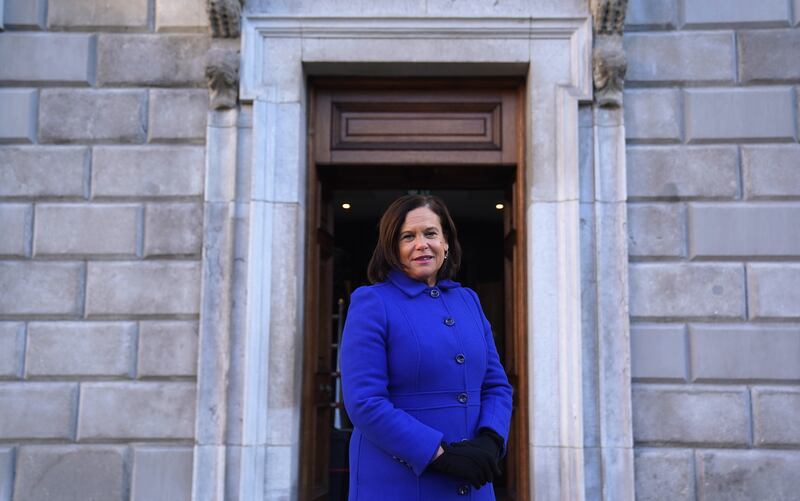Eight in 10 Irish taxpayers want the Local Property Tax (LPT) abolished, according to a survey by Taxback.com. Nearly half the 1,200 respondents said LPT is unfair because it takes no account of income. Others complained councils waste the money, or that stamp duty means homeowners are being taxed twice.
Resistance to LPT looks extraordinary when viewed from outside the Republic. In almost every developed country, significant property taxes are an accepted fact of life.
The particular concern from Northern Ireland is that this resistance spills into politics north of the Border, where property tax is effectively the only revenue-raising power for both local and regional government.
Charges known collectively as “the rates” are levied on nearly all domestic properties and many business premises. Homeowners pay an average £1,000 (€1,128) a year, based on a percentage of their property’s value.
Rates raise £1.4 billion annually in total. Around half goes to councils, making up 80 per cent of their income. The rest goes to Stormont, making up 4 per cent of its income. While that 4 per cent figure seems small, it is the only meaningful fraction of its budget Stormont raises itself and this power is considerably underused by UK standards.
Equivalent domestic charges in England are almost twice as high. They are even higher in Wales, which has comparable economic statistics to Northern Ireland, so a “disadvantaged region” exception does not apply.
Last September, the first report from the Northern Ireland Fiscal Council, set up under the New Decade, New Approach deal to advise Stormont on its finances, found bringing domestic rates up to the level in England would raise £615 million a year, an extra 4 per cent of the budget. This would be enough to relieve spending shortfalls and begin tackling years of underinvestment, albeit “at the cost of significant political controversy”.
Instead of going up, however, rates have been going down in real terms.
Property tax reveals how it is often harmful to attempt consistency and trite to criticise inconsistency.
The DUP and Sinn Féin have frozen charges at or below inflation for over a decade, causing their share of Stormont’s income to decline.
The DUP is most to blame for initiating this policy. It had long prided itself on keeping rates low in unionist-controlled councils, presenting this as a distinct DUP offering of thrift and competence. Former leader Peter Robinson was keen to extend it to Stormont.
Sinn Féin was happy to go along with anything popular. It also wanted credit for stopping water charges, planned by Labour direct rule ministers. Water was originally funded from the rates, although the amount raised had not covered costs for generations. By freezing rates, Sinn Féin could say households already paid for water and it would not make them pay twice.
There was a vague awareness of this in the Republic when Sinn Féin opposed water charges as an all-Ireland policy.
The introduction of LPT in 2013 created a less noticed and in many ways more complicated cross-Border conundrum.
Until last year, Sinn Féin demanded immediate abolition of LPT, in an apparently bizarre contradiction with its stewardship at Stormont.

The party now advocates phasing out LPT over five years and replacing it with a wealth tax – a distinction without much of a difference, as most personal wealth is property. This could be a plan to bring northern and southern positions into line but in the interim it means demanding LPT goes down 20 per cent a year while Stormont urgently needs to put rates up.
The inevitable result, assuming Stormont returns, is that Sinn Féin will never agree to rate increases.
Parties in the Republic have already tried to capitalise on the inconsistency. Fine Gael and Fianna Fáil have criticised Sinn Féin for “hypocrisy”. Rivals on the left have ridiculed its rejection of what amounts to a modest, conventional wealth tax. There is no doubt Sinn Féin has engaged in emotive nonsense about “taxing the family home”.
It would be straightforward for the party to defend its different stances, north and south, should it wish to do so. They reflect very different economic and political circumstances.
Sinn Féin says it would replace the LPT revenue lost to councils from general taxation. This is administratively more efficient and an option Stormont does not have – it could only raise money for councils from the rates.
[ If Sinn Féin wants to hit the rich, it should embrace property taxesOpens in new window ]
Politics in Northern Ireland would benefit from a truce on shallow cross-Border comparisons. With Sinn Féin the largest party, it is under even more pressure and scrutiny to be consistent. Property tax reveals how it is often harmful to attempt consistency and trite to criticise inconsistency.
It may be too much to hope Sinn Féin will embrace practical partitionism or that its opponents will pull their punches. But more attention could be paid to the details of north-south differences. They tend to reveal rather quickly when one size does not fit all.



